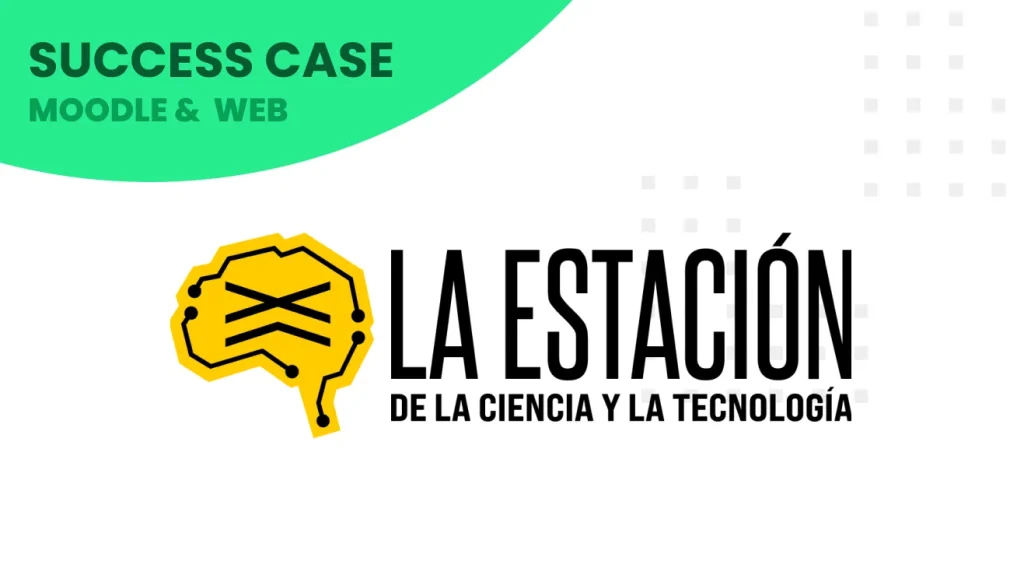Moodle elearning platform and its solutions
Let’s see a brief introduction about Moodle and custom development.
In the last few weeks, we have been experiencing a series of totally unforeseen changes. The new reality forces us to adapt quickly and often with little planning.
The shift to online training is here to stay.
Many public and private companies had to adapt to the change without any other choice, but this obligatory nature has established new ways of learning that a large part of the population has taken for granted and has made a normal part of their daily lives.
The training sector is one of the areas that has adapted most quickly since we have a large number of technological tools that allow us to do so. If we review what is being done these days, we often see that they have chosen to reproduce the face-to-face model to the non-face-to-face model in the form of webinars, video recording, videoconferencing… There are many tools on the market that can help us do this.
Introducing technology in training is not an easy task, especially if we consider technology as the support to implement the learning experience we have designed and not only as the element that generates learning. With the rush of these weeks, there are aspects that need to be rethought.
Essential questions for Moodle solution and custom development

If we offer online trainingwe have to take into account a series of needs that the user will have in order to consider what type of customized web programming or what type of e-learning platform will be developed to provide the service with these requests that will be required by the people who will be using the training platform.
So, we will think about several factors:
- Who is this distance training for?
- What key points does this e-learning platform require?
- What means are available to the company that will use the training tool?
These are the three starting points for knowing what type of web development to present in order for the user to have a satisfactory online training experience.
What type of web development to choose for online training
Another important element we have to work with is the technological tool that has to support us to do everything we have designed. We run the risk of focusing learning around a specific technological tool and forgetting the most important one: learning. Moodle is a very powerful tool but, like everything else, it depends on how we use it. The most used elements of Moodle are those that allow uploading files, some videos, and some simple self-correcting quizzes. Pero Moodle nos ofrece mucho más. It is a box with many tools that we can use in different ways. Depending on how we use it, we will have different results.
Moodle elearning platform and custom web development, a complete service
At 3ipunt we are experts in this type of Moodle integration.
To give you some ideas, here are some of the custom Moodle integrations we have developed.
Integration with Moodle and WordPress
A service offered beyond strict training. Integration with Moodle through a custom WordPress plugin to offer the sale of online courses. It is a perfect combination of using WordPress as an online course offering and Moodle as an e-learning platform for the delivery of these courses.
Moodle is a very intuitive and easy-to-use platform. In this article, we give you some tips on how to create successful Moodle courses.
Integration of NextCloud tools with Moodle
As alternatives to Google and Microsoft tools, and for democratic digitalization, we have launched a custom development prototype in PHP, JS, to integrate NextCloud with Moodle. This project was born because of a group of families who do not agree with these companies since they consider that the sovereignty of their children’s information and personal data is not very strictly preserved. It is a project initiated in schools with students of young ages. It has been very well received and is being extended to more users.

External application linked with Moodle
A custom programming to integrate an external application to the Moodle elearning platform.
Moodle has a series of standards in its Core that are immovable if not with a custom application development in different programming environments for each case. In this project we integrated the client’s own content in a Moodle environment, giving a solution to the requirement: to show their content in a different way, both in the front end with the development of a theme and in the back end with a local plugin. In this way, all the company’s own structure and content were integrated into Moodle.
These are some examples of integrations with the elearning platform par excellence, as we have mentioned before, Moodle has incredible potential.
Review your training strategy

The current situation has helped many people and organizations to make the leap to the online world, but we must bear in mind that this step has not been taken in the best possible conditions and that, surely, it will be necessary to review the decisions taken in a more global framework in order to improve it and establish the best practices for the future. We have an opportunity to review and rethink what is wrong with our training. Let’s improve it! We encourage you to review your training strategy and see what you can improve and optimize.
The non-face-to-face training is characterized to move in two those: space and time. It is clear that we do not coincide in a face-to-face space, but we do coincide in a virtual one. We can coincide at the same time, so the training will be synchronous. For example, in the field of communication, the tools that will help us to work synchronously will be chats and videoconferencing. If we do not coincide, the communication will be asynchronous. Tools such as messaging and forums can help us. Each has its advantages and disadvantages.
How distance learning should be
Universal Design for Learning (UDL) provides us with a set of principles and guidelines for designing learning so that it can be valid for as many users as possible. This allows us to provide great flexibility in our design to meet as many needs as possible since not all participants start from the same starting point, nor do they have the same skills.
The UDL provides flexibility in the ways in which information is presented, as well as how students demonstrate their knowledge and skills. It reduces barriers, and provides accommodations and challenges for all students, including those who may have a disability or language limitation, for example.
The 3 principles of the UDL are:
- Principle 1: Provide multiple ways of representation
- Principle 2: Provide multiple ways for action and expression
- Principle 3: Provide multiple ways to engage.
Each principle has its own set of guidelines to achieve this. If you want to know more you can consult the ESP page.





